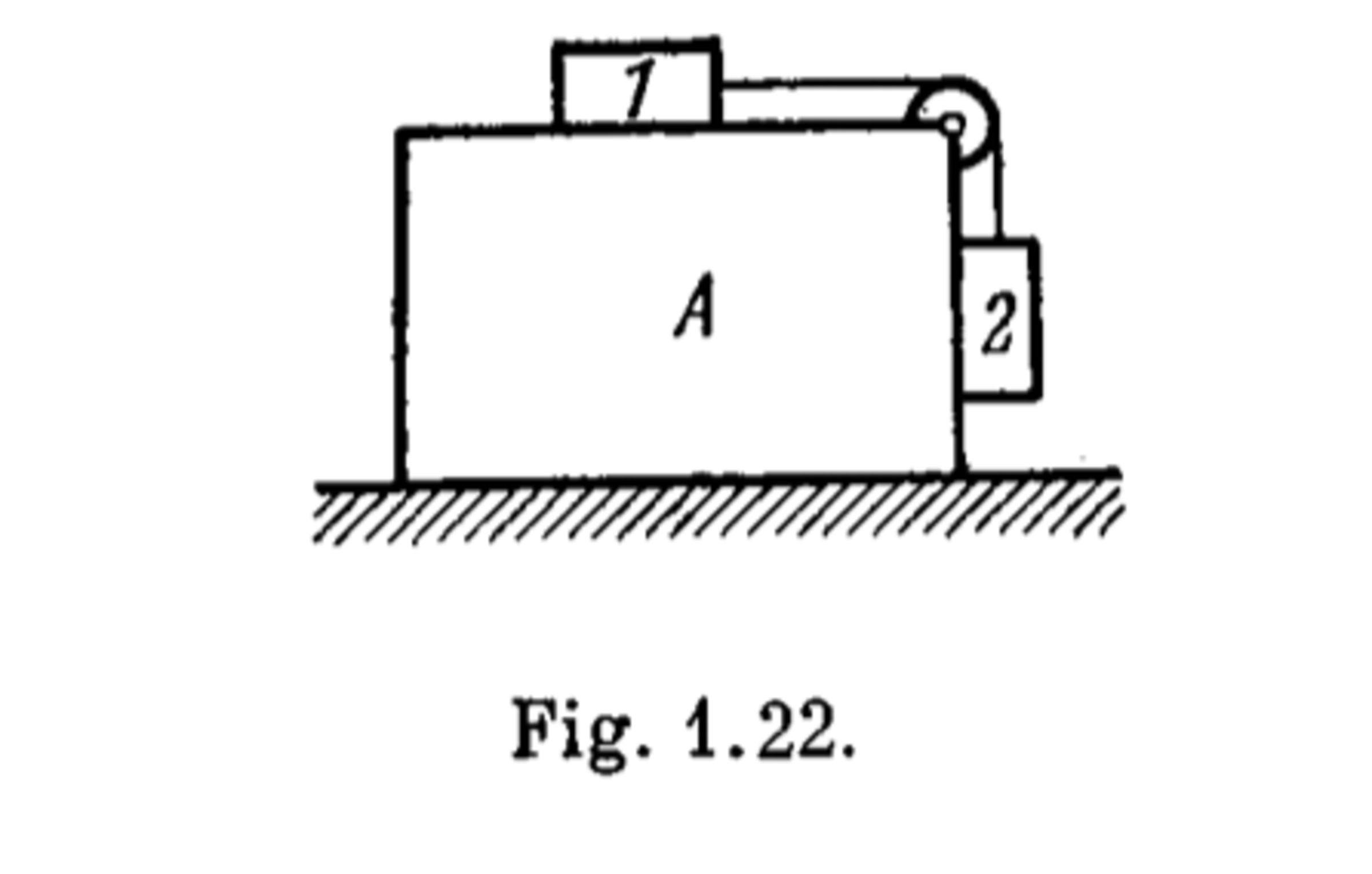Some more Irodov revision for old Dougo
This is one of my favourite problems from Irodov. It's really quite beautiful conceptually.
Here's the problem:
What is the minimum acceleration with which bar A (Fig. 1.22) should be shifted horizontally to keep bodies 1 and 2 stationary relative to the bar?

The masses of the bodies are equal, and the coefficient of friction between the bar and the bodies is equal to μ . The masses of the pulley and the threads are negligible, the friction in the pulley is absent.
The desired acceleration of the bar for the blocks to be stationary relative to the bar is of the following form:
a = ( p + μ ) g ( n − μ )
Type your answer as n + p , where n , p are positive integers.
The answer is 2.
This section requires Javascript.
You are seeing this because something didn't load right. We suggest you, (a) try
refreshing the page, (b) enabling javascript if it is disabled on your browser and,
finally, (c)
loading the
non-javascript version of this page
. We're sorry about the hassle.
1 solution
Which book do you practice for higher physics?
Log in to reply
I use brilliant.org, pdfs from online, Walter Lewin's lectures, recently started on Irodov, and Serway and Jewett physics for engineers and scientists.
Log in to reply
You're brilliant,please help me to manage time because I have lot to do?
Log in to reply
@Srijan Singh – Hehe not really lol. I'm only learning physics. I don't do physics as structured and as much as Lil Doug, but I do it in my own time.
Log in to reply
@Krishna Karthik – As you are elder, Pls help me in managing time
Log in to reply
@Srijan Singh – Managing time? Wdym?
Log in to reply
@Krishna Karthik – Means that I have lot to do and I can't manage time
Log in to reply
@Srijan Singh – Ah ok. As in schoolwork? Let me suggest something: work on physics and computer science in your holidays . Work on schoolwork in your school term.
Log in to reply
@Krishna Karthik – My school and online classes are always going on ,there are no holidays . I usually prepare for my school terms exam when they are coming
Log in to reply
@Srijan Singh – Well, good. I can't really help you as I don't know much about the Indian system of education and how pressuring it is.
@Krishna Karthik .I wish you would like this problem
Log in to reply
@SRIJAN Singh I solved it just now; it's pretty easy.
@SRIJAN Singh See my newest solution on the problem you sent to me.
Firstly, to understand what the acceleration of the bodies have to be if they are to be at rest in the bar's accelerated frame. Basically, the principle of this problem is that the bars have to be at an equal acceleration to appear stationary in the bar's reference frame.
If body 1 is not accelerating enough to the right direction, then it will "lag" behind; ie. it won't appear at rest. If it is accelerating more than the acceleration of the bar, then it will go too far and won't appear at rest. However, at just the right acceleration, block 1 will "move with the bar".
Writing the equation of motion for body 1:
m a = T − μ m g
Where a is the desired acceleration of block 1.
For block 2, note that the normal force is increased because the bar is sort of creating an artificial gravity by accelerating to the right at acceleration a .
Hence the normal force will be present , and will be:
N 2 = m a
Equation of motion:
0 = m g − T − μ N 2
Solving will yield a = ( 1 + μ ) g ( 1 − μ )